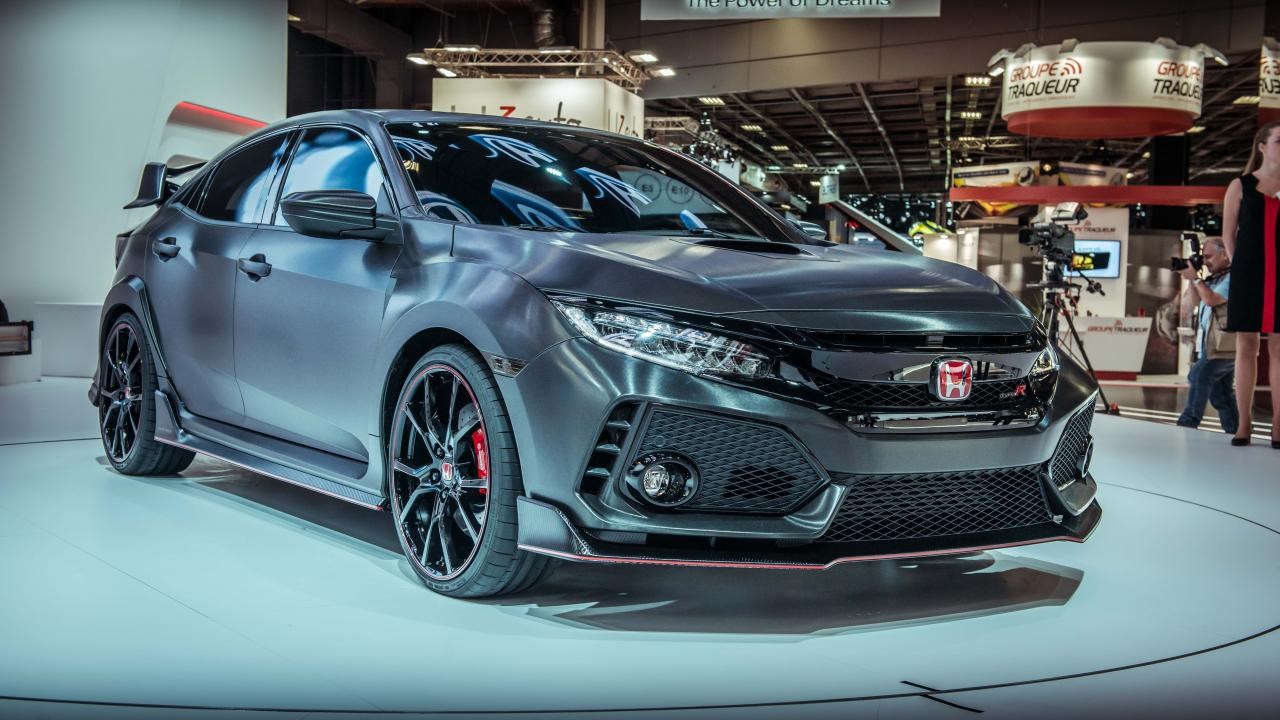The new-look Clarkson/Hammond/May-less Top Gear has been besieged with setbacks, controversies and a semi-sustained critical mauling. About the only thing it isn’t knee-deep in at present is ... enthusiastic viewers.
And now comes a new threat from an unlikely quarter.
It appears a development
firm has plans to bulldoze the famed Top Gear test track (or Dunsfold Park Aerodrome as it is called on the gate signs) in Surrey, to make way for an1800-home subdivision.
The airfield, replete with aircraft, has been the site of speed tests of many of the world’s most exotic supercars, as well as the scene of challenging failures at the hands of the ex-presenter line-up.
The circuit was also home for the show’s Star in a Reasonably Priced Car segment, in which celebrities such as Gordon Ramsay, Jennifer Saunders and Tom Cruise raced against the clock in a variety of cut-price hatchbacks.
The destruction of the airfield in favour of housing isn’t a done deal, though. Campaigners who oppose the plan — that has already been approved by the local borough council — have taken their fight to the next level, having requested a public inquiry.
Rather than anything to do with petrol hedonism, or a love of three men making things explode, campaigners claim the local infrastructure cannot handle the extra population a new housing development would bring.
When the development was given the green light in December, there were some Top Gear fans upset that the UK was set to lose one of its most recognisable motoring venues, which has even been replicated in racing simulation games, including the Forza Motorsport series.
A member of the Top Gear Fans Facebook group, said at the time: “At the end of World War II, there were more than 250 airfields in the UK and some of these have become motoring venues, like Dunsfold. Few remain for motorsport use, so it is vital that no more are built on. Stop all future redevelopment before it's too late.”
The track is still being used by Top Gear now hosted by Matt LeBlanc, Chris Harris and Rory Reid.
The BBC said: “We have long been aware of the planning application for Dunsfold Park, but do not anticipate this will impact on the filming of Top Gear at the site for the foreseeable future.”
Regardless of what happens, the sound of 1800 homes being developed by construction companies using heavy machinery will probably still be a lot quieter than having an excited Jeremy Clarkson bellowing “Poweeeeer!” over the back fence.
Type R sneaks into US
 Honda Civic Type R. Photo / Supplied
Honda Civic Type R. Photo / Supplied
The American market is introducing a Type R to its shores. It has never been on offer there before, so the US motoring media is in a tizz over news it’ll be introduced this year (assuming President Trump lets a foreign carmaker unleash something as unholy as this unimpeded, of course).
If the car is to be judged on a value basis with a dollar amount pinned to each cut, crease, slash, wing, splitter and intake, then it’ll prove solid value for money.
It’s purportedly still a five-door hatchback but there is so much stuff going on, it’s difficult to stand back and assess it for what it is without being distracted by manga cartoon theatrics, or one of its three centrally mounted exhaust pipes.
If the design language is box-of-frogs crazy, then at least the performance figures speak much more clearly: a direct-injected 2.0-litre four-cylinder turbo developing 228kW peak power and 400Nm of torque.
The only gearbox available is a short-throw six-speed manual, which might confuse a few American buyers.
But what about us Kiwis? The good news is, for the first time, we also look set to receive the Civic Type R through the national Honda dealer network.
The distributor has to launch the civvie-street hatchback the Type R is based on first, of course.
But following that model’s arrival later this year, we also will be able to marvel in the madness up close. Just don’t cut yourself on one of those wing edges.
Backhoe to the future
 BMW John Deer excavator. Photo / Supplied
BMW John Deer excavator. Photo / Supplied
BMW has been issuing concept vehicles aplenty lately.
The carmaker spent 2016 blowing out candles on its centenary cake and celebrated with a hodgepodge of Vision Next 100 concepts, all taking an H.G. Wells-ish peek100 years into the future of the company’s core brands: BMW, Mini, Rolls-Royce and (the only one that we really liked) BMW Motorrad.
While nothing to do with the Bavarian-headquartered manufacturer’s birthday celebrations, another concept vehicle that BMW unveiled still had us scratching our heads. This is mainly because — and there’s no skirting around the fact — it’s a backhoe.
The digger is a joint venture project between BMW subsidiary Designworks and construction and farming machine titans, John Deere.
Regardless of what it is, as with any concept build worth its salt, the accompanying press release is chock-full of superlatives.
There’s lots of talk of “expanded operator stations”, “robust future equipment” and “holistic and innovative research”.
Here at The Good Oil, we’re not experts on big yellow construction machines. But we will concede, as far as backhoes go, this one looks cool.
The bodywork is svelte, in a sort of sports car-like manner. BMW Designworks describe it as a “lightweight metal matrixed exoskeleton”, but then, of course, it would.
Apparently, the backhoe is powered by “a suspended hybrid propulsion unit”, which helps the machine achieve its light operating weight.
So yes, rather diverting. But, er ... now’s a good time to go back to conceptualising cars, chaps. And maybe something that we’re likely to see in the next couple of years too, rather than in 2116.




